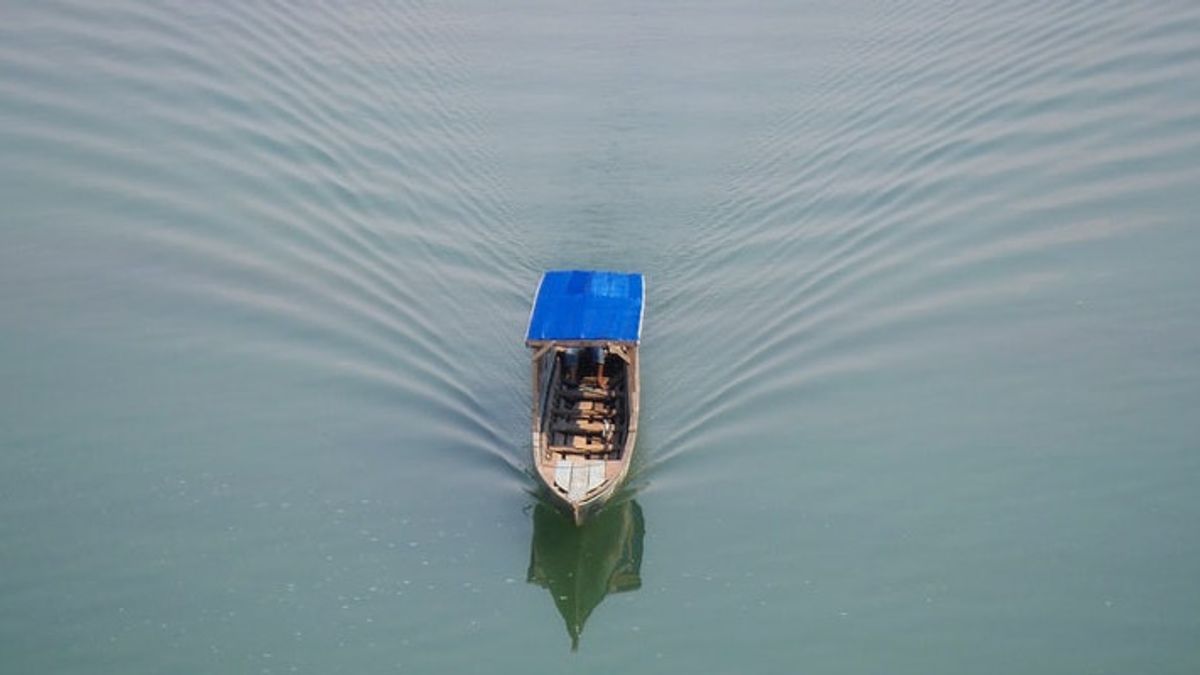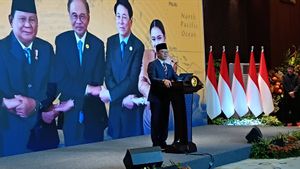JAKARTA - The dispute between China and the United States (US) has never been resolved. At least until today, when two countries have made accusations of COVID-19, both closed the consulate offices, and they have been studying the Mekong River that stretches from Tibet to Vietnam.
Last April, a study was initiated by Washington. Research carried out by the water consultancy firm Eyes on Earth shows that eleven 4,350 kilometers of dams built by China in the upper reaches of the Mekong River have held 47 billion cubic meters of water. This exacerbated drought in the lower reaches of the river in 2019.
The prediction model developed by this study is based on satellite images and data from the MRC (Mekong River Commission), an inter-governmental organization of countries along the Mekong River crossing. The modeling shows that the volume of water downstream of the Mekong River has started to decrease since 2010. When the study was released, the Chinese government criticized it and called it a political agenda to overthrow China.
This time, China responded with a counter study. Launching SCMP, Monday, August 3, the collaborative study between Tsinghua University and the China Water Resources Institute was released. The study shows that China's dams actually help tackle the drought problem because they are able to store water in rain music and release it in the dry season.
Analysts have called the competing claims signs of a battle for control of the narrative that frames China's relations with neighboring Southeast Asia. In short, the Mekong River has become the newest front in the US-China competition.
Narrative competitionThe Mekong River is the source of life for 60 million people. The river flows from China and crosses Cambodia, Laos, Thailand, Myanmar to Vietnam. Media reports in downstream countries link the drought in their countries to China's hydropower or dam irrigation operations.
That narrative strengthened in April when the Eyes on Earth report was released. However, the Chinese study, based on the work of eight researchers led by Professor Tian Fuqiang, paints a very different picture. They claim the drought is caused by environmental factors, including high temperatures and decreased rainfall.
In addition, the Chinese study also said that the research from Eyes on Earth was a "reckless accusation by some foreign researchers that blame China for drought in the lower region's countries." They also concluded that it is China that faces the highest drought risk of all the Mekong countries.
It said the overall frequency of severe drought in the Mekong is around 7 percent. However, 12 percent of the drought occurred in the upper and middle areas where China's dams are located.
Potential new conflictsThe conflicting reports are a sign that the river has turned into a geopolitical battleground between the US and China. This point has also been touched on by water and energy governance company Amperes. The company says the study from Eyes on Earth is not definitive and its conclusions go beyond the available evidence.
"Water scarcity incidents offer strategic opportunities for stakeholders to use the data to increase or decrease problems in pursuing their political goals," said the Amperes report.
Biba, who is also the author of a book on Chinese hydro-politics in the Mekong, said China was doing nothing good in this respect by being reluctant to share information with other countries. "Data exists and can be shared. China's reluctance to do so strongly suggests that the Chinese side has something to hide. It no longer matters whether China actually retains water or not, the damage is already done, "said Biba.
The Mekong region's foreign ministers held a meeting in February. On the occasion, China said it would consider sharing hydrological information throughout the year with the Mekong countries. It also ensures what it calls the “rational and sustainable” use of water resources.
In April, Chinese Foreign Ministry spokesman Geng Shuang promised China would share information immediately. Geng Shuang also expressed China's desire to cooperate with countries along the Mekong to deal with climate change and flood disasters. However, until now, there has been no continuation of this hydrological information.
The English, Chinese, Japanese, Arabic, and French versions are automatically generated by the AI. So there may still be inaccuracies in translating, please always see Indonesian as our main language. (system supported by DigitalSiber.id)













